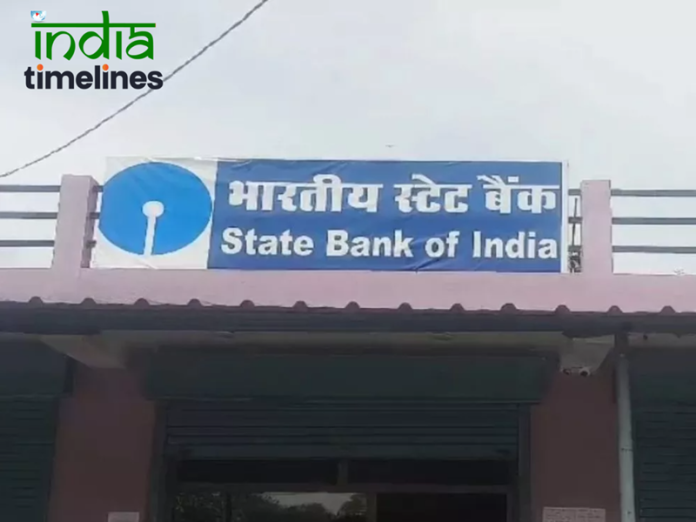
In a shocking revelation that has sent ripples through the financial sector, a fake branch of the State Bank of India (SBI), India’s largest public sector bank, was recently unearthed in Chhattisgarh. This fake branch reportedly duped several unsuspecting people of lakhs of rupees, posing as a legitimate SBI branch and conducting fraudulent transactions for months before it was exposed. The story of how this fake SBI branch came into existence and how it swindled people out of their hard-earned money has raised serious concerns about banking security, regulation, and public awareness.
This article delves deep into the details of this fraudulent operation, examining how it was conducted, its impact on the victims, the banking sector’s role in preventing such crimes, and what measures can be taken to avoid such scams in the future.
The Emergence of the Fake SBI Branch
The fake SBI branch in Chhattisgarh was set up with shocking precision and care, making it nearly indistinguishable from a legitimate branch. Located in a remote part of the state, it was equipped with fake signage, counterfeit bank documents, and staff members who impersonated bank officials. The branch conducted all regular banking activities, including opening savings accounts, accepting deposits, and providing fake loan documents, all without the knowledge or permission of SBI or regulatory authorities.
The scam went undetected for months, primarily targeting villagers and small business owners in the region, many of whom lacked awareness of modern banking protocols and trusted the false branch as they would a legitimate one. The fraudsters behind the operation cleverly played on this trust, exploiting people’s financial vulnerabilities and their lack of knowledge regarding digital banking.
How the Fraud Was Conducted
The masterminds behind this scam were well-organized and resourceful. The fake branch had all the trappings of a genuine SBI branch, including official-looking signage, computers, cash counters, and employees dressed like bank staff. The fraudsters even managed to secure fake identification cards for the supposed bank employees, making it even harder for customers to suspect any foul play.
Here’s how the operation functioned:
- Customer Onboarding and Account Opening: The fraudsters would convince customers to open savings or current accounts, claiming attractive benefits and lower interest rates. They used fake account forms, stamped them with fraudulent seals, and issued counterfeit passbooks and checkbooks to the customers.
- Deposit Collection: After onboarding, they accepted deposits from individuals, sometimes offering higher interest rates than legitimate banks. These deposits were never credited to real SBI accounts but were instead pocketed by the fraudsters.
- Fake Loans: In some cases, they lured people into taking loans, providing them with fake loan approval letters, and charging them hefty “processing fees” in advance. These fees were paid by victims in cash, with the promise of quick disbursement, which never materialized.
- Investment Fraud: The fake branch also posed as an agent for investment schemes. It promised high returns on fixed deposits and other financial products, collecting huge sums from unsuspecting people.
- Counterfeit Banking Instruments: Customers were given counterfeit passbooks, deposit slips, and even fake ATM cards. The ATM cards, when used, would not work, further raising suspicion.
The scam was revealed when one of the customers visited a genuine SBI branch in a neighboring town and tried to withdraw money using their fake passbook. When the bank official checked the account details, they discovered that the account did not exist in the bank’s system. Alarmed, the customer reported the discrepancy, leading to an investigation that ultimately exposed the fake branch.
The Impact on the Victims
The discovery of this fake SBI branch has left many of its customers devastated. Many villagers had entrusted their life savings to the fake branch, expecting a safe and secure place for their money. The realization that they had been duped out of lakhs of rupees caused panic and anger among the victims. For some, the money deposited was meant for critical expenses such as healthcare, education, or weddings, leaving them in a financially precarious position.
One of the major reasons that fraudsters were able to dupe so many people was the lack of awareness in rural and semi-urban areas about modern banking practices, such as online account tracking and the use of official banking channels. Many of the victims were unaware of how to verify the legitimacy of a bank branch or recognize the signs of a scam. The trust that people have in public sector banks like SBI was manipulated by the scammers, making it easier for them to gain credibility in the eyes of the public.
How the Scam Was Uncovered
The discovery of the fake SBI branch was purely accidental, as one of the victims attempted to conduct a transaction in a genuine branch and found that his account didn’t exist. Upon realizing the scope of the scam, SBI and local authorities immediately launched an investigation.
Bank officials and the police moved swiftly, raiding the premises of the fake branch. They confiscated all documents, computers, and equipment from the site. Several employees working at the fake branch were arrested, though it is believed that the mastermind behind the operation had already fled the region. The authorities have been working tirelessly to trace the individuals responsible for orchestrating the scam and recover the stolen money.
The Role of Banks and Authorities
The case of the fake SBI branch in Chhattisgarh raises serious questions about the security measures in place to prevent such incidents. While the fraudsters were able to operate without detection for several months, there are several areas where both banks and regulatory authorities can improve:
- Stringent Monitoring and Audits: Regular audits and monitoring of branches, both physical and digital, are crucial to ensuring the authenticity of all operations. Banks need to implement more stringent controls, especially in rural and semi-urban areas, to detect any irregularities.
- Public Awareness Campaigns: Financial literacy campaigns targeted at rural populations can play a significant role in preventing such scams. People need to be educated about how to verify the authenticity of a bank branch and be made aware of common banking scams.
- Improved Digital Infrastructure: With the increasing adoption of digital banking, banks must improve their online infrastructure, ensuring that customers can easily verify their accounts, track transactions, and report any suspicious activity.
- Tighter Licensing and Regulation: Regulators like the Reserve Bank of India (RBI) should enforce stricter regulations for opening and operating bank branches. Additionally, any branch that claims to represent a major bank should be thoroughly vetted before it begins operations.
- Increased Cooperation Between Banks and Law Enforcement: The discovery and swift action in this case demonstrate the importance of cooperation between banks and law enforcement agencies. The faster such operations are exposed, the better the chances of recovering stolen funds and bringing the perpetrators to justice.
How to Protect Yourself from Banking Scams
In light of this incident, it’s crucial for people to be aware of how they can protect themselves from falling victim to banking scams. Here are a few tips to ensure your financial safety:
- Verify the Legitimacy of the Branch: Always verify the authenticity of a bank branch before conducting transactions. This can be done by visiting the official website of the bank or calling their customer service helpline.
- Look for Official Credentials: Make sure that the branch has all the necessary licenses and approvals displayed. Genuine bank employees will always carry proper identification.
- Avoid Cash Transactions: Whenever possible, avoid making large cash deposits or withdrawals. Use online or digital banking methods, which offer greater transparency and security.
- Report Suspicious Activity: If you notice any irregularities in your account or suspect that a branch may be fraudulent, report it immediately to the bank or local authorities.
- Stay Informed: Keep yourself updated about common scams and fraudulent practices by following trusted news sources and attending financial literacy workshops, especially if you live in a rural or remote area.
India Time Lines
Conclusion
The fake SBI branch scam in Chhattisgarh is a grim reminder of the vulnerabilities in the banking sector, particularly in regions where financial literacy is low, and trust in public institutions is high. While the authorities have made progress in uncovering this fraud and arresting the perpetrators, the victims are left to pick up the pieces of their shattered financial security. It’s essential for both banks and the government to work together to tighten security protocols, raise public awareness, and ensure that such incidents do not occur in the future.
At the same time, individuals must also take steps to protect themselves by staying informed, verifying the legitimacy of banking institutions, and using secure financial channels. Only by working together can we prevent future scams and build a safer financial environment for everyone.


































jvnpvj